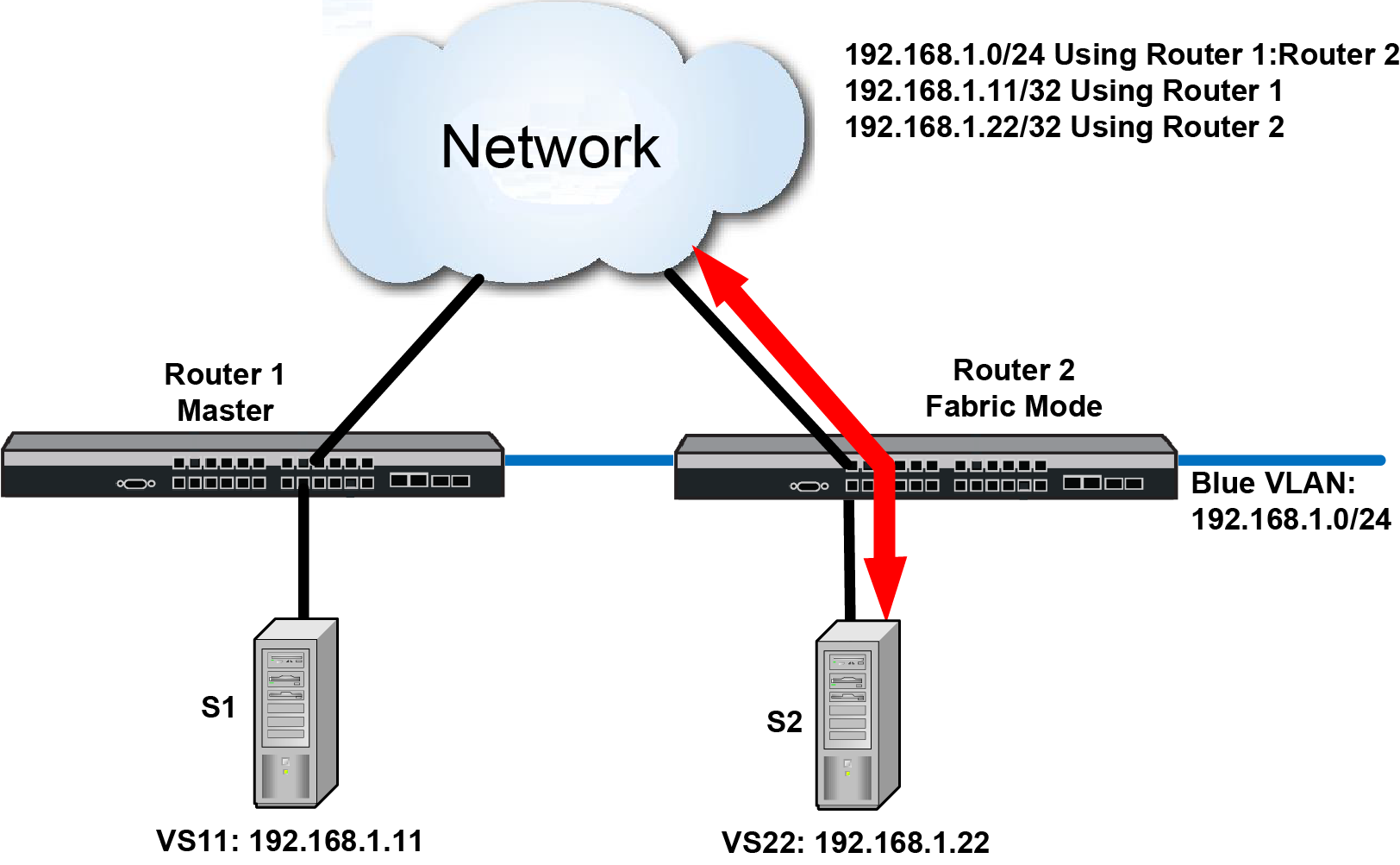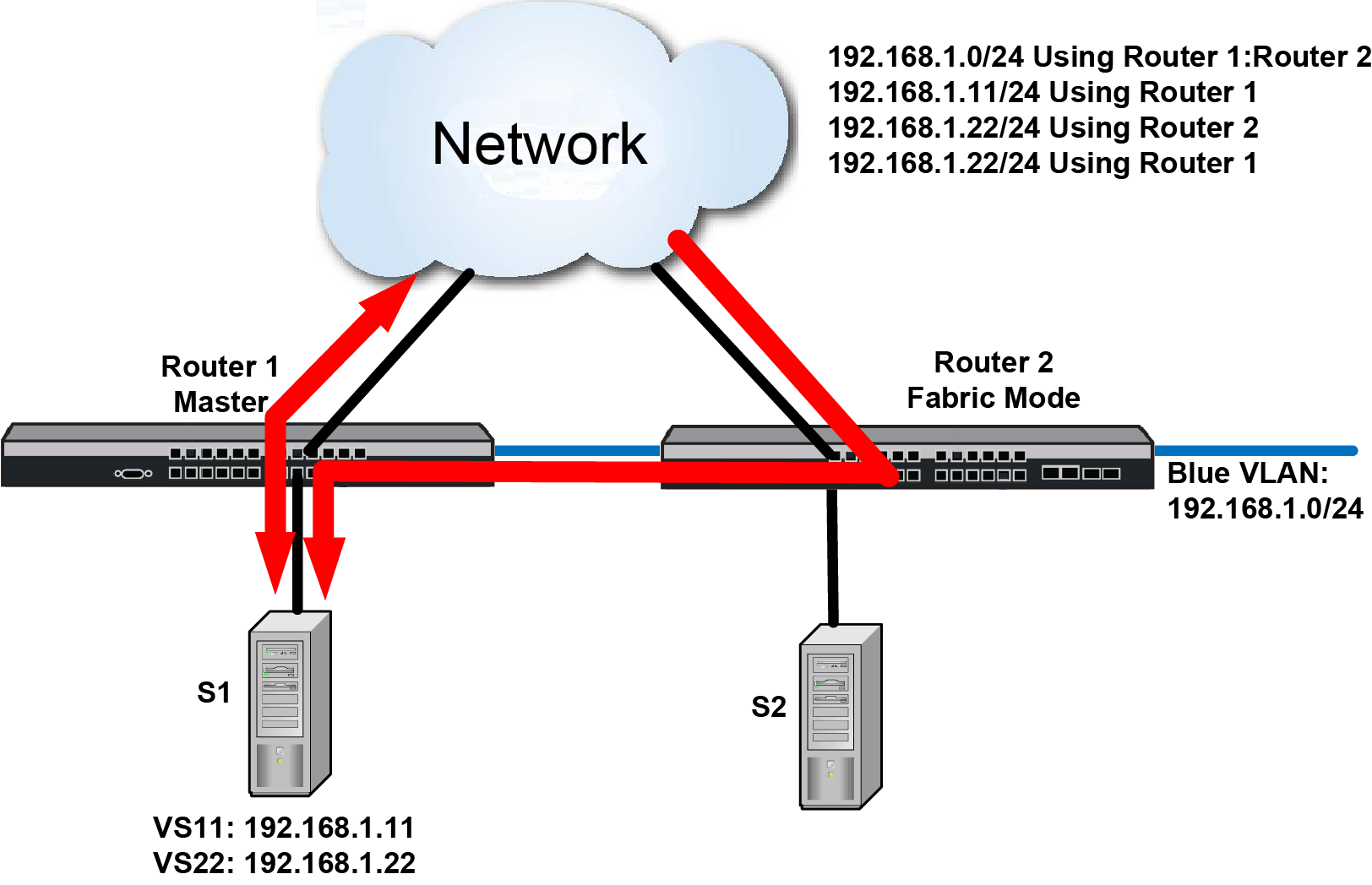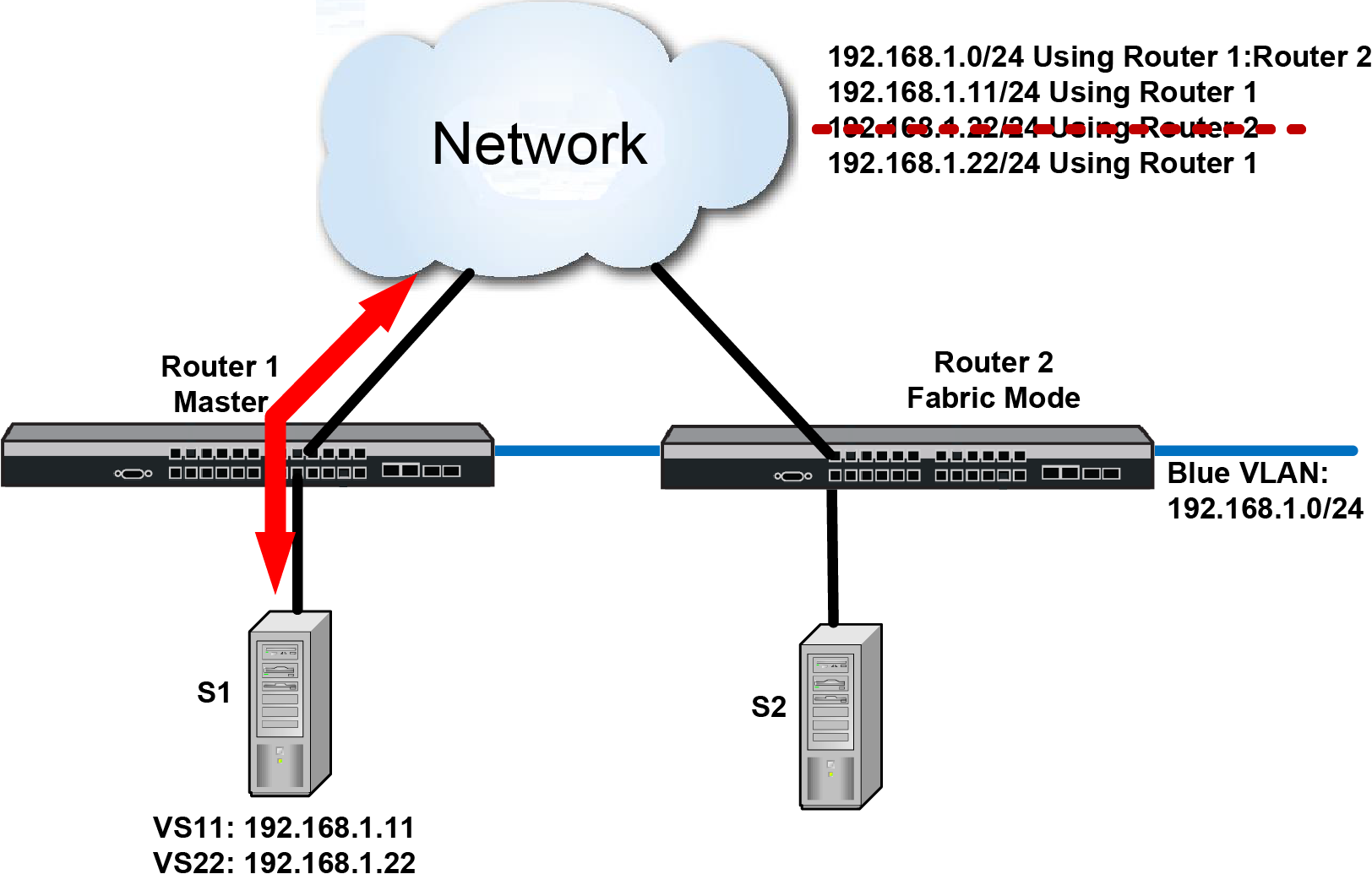In fabric route mode, asymmetric traffic flows can occur because both VRRP switches advertise the IP subnet. Host mobility eliminates this asymmetric traffic flow by advertising a 32-bit route. A short period of asymmetric traffic flow may still occur until OSPF converges.
With host mobility enabled, when a device is moved from one VRRP router to another, OSPF advertises a 32-bit host route for the installed device. When the VRRP router that previously owned the device receives the new advertisement, it removes the route from its database. The route is no longer advertised on the previous VRRP router. All traffic flows now use the VRRP router the device was moved to.
Forwarding Prior to Virtual Server Move displays Router 2 in fabric mode allowing Router 2 to advertise virtual server 22 (VS22) on physical server S2 out to the network. Should VS22 be moved to physical server S1 with host mobility disabled, Router 2 will continue to advertise VS22 out to the network. At the same time, Router 1 will begin advertising VS22.

This can cause asymmetric traffic flows to occur as shown in Asymmetric Traffic Flows During Timeout Period. With VRRP host mobility enabled, as soon as Router 2 receives Router 1‘s 32-bit VS22 route advertisement, Router 2 stops advertising the VS22 route. All VS22 traffic flows use Router 1, as shown in New Traffic Flows With Fabric Route Host Mobility Enabled.


If VS22 is removed from S2 and not installed on S1, then ARP is used to refresh the entry. When an OSPF host route is learned, ARP refreshes the entry. If ARP does not get a response, it deletes it‘s entry for the host route and causes host-mobility to delete its host route entry.
Directly connected routes that should not be fully advertised can be optionally restricted using the host mobility ACL command.
Use the vrrp host-mobility command to enable fabric route host mobility on the VRRP router.
Use the vrrp host-mobility-acl command to specify an ACL containing those routes that should or should not take part in fabric route host mobility for this router.
Directly connected routes are not advertised until redistributed by OSPF using the OSPF redistribute connected command.
The following example configures Router 2 for fabric route host mobility and redistributes connected routes into OSPF. Fabric route and host mobility may also be configured on the VRRP master, but will have no affect while in master mode.
Router 2(rw)->configure Router 2(rw-config)->interface vlan 200 Router 2(rw-config-intf-vlan.0.200)->ip address 198.168.1.0 255.255.255.0 primary Router 2(rw-config-intf-vlan.0.200)->vrrp create 1 v3-IPv4 Router 2(rw-config-intf-vlan.0.200)->vrrp address 1 198.168.1.10 Router 2(rw-config-intf-vlan.0.200)->vrrp enable 1 Router 2(rw-config-intf-vlan.0.200)->vrrp fabric-route-mode 1 Router 2(rw-config-intf-vlan.0.200)->vrrp host-mobility 1 Router 2(rw-config-intf-vlan.0.200)->no shutdown Router 2(rw-config-intf-vlan.0.200)->exit Router 2(rw-config)->router ospf 1 Router 2(rw-config-ospf-1)->redistribute connected

 Print
this page
Print
this page Email this topic
Email this topic Feedback
Feedback